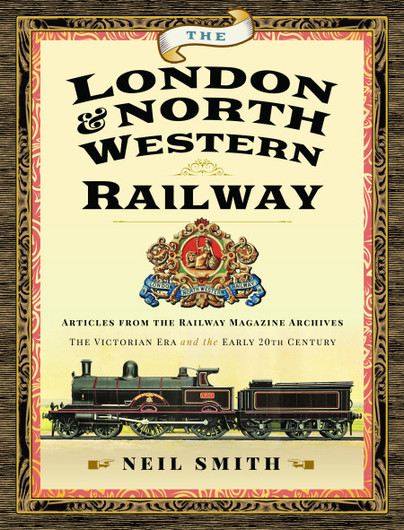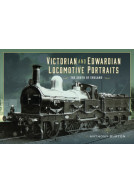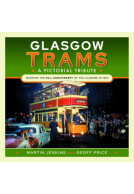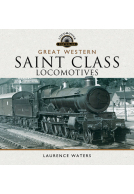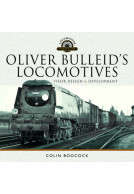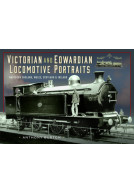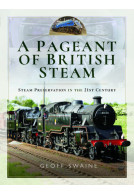The London & North Western Railway (Hardback)
Articles from the Railway Magazine Archives - The Victorian Era and the Early 20th Century
Imprint: Pen & Sword Transport
Pages: 304
Illustrations: 205 colour & black and white illustrations
ISBN: 9781526781376
Published: 28th May 2021
(click here for international delivery rates)
Order within the next 4 hours, 18 minutes to get your order processed the next working day!
Need a currency converter? Check XE.com for live rates
This book is a wonderful miscellany of the London & North Western Railway, here is a delightful new illustrated history of the Premier Line, drawn from the Railway Magazine archives, which covers the close of the Victorian Era and the start of the 20th century, topics of the 27 chapters include.
Personal Interviews with F.Harrison (General Manager), F. W. Webb ( CM&EE ).
Notable Stations - Birmingham New Street, Carlisle Citadel, Crewe, Euston, Manchester London Road, Preston and Willesden.
Wolverton Carriage Works and Earlestown Wagon Works.
Engine Drivers and Their Duties by C.J. Bowen-Cooke
The Irish Mail and the 'American Special' Trains
Webb Precedent and Compound Locomotives
Royal Saloons
The Opening and Early Years of Three L N W R constituent companies, the Liverpool & Manchester Railway, the Grand Junction Railway and the London & Birmingham Railway.
The large number of photographs and illustrations, mostly from the archives of the London & North Western Railway Society, make this a very special book.
A must have purchase for the LNWR enthusiast and, also one for any enthusiast of the pre-grouping era. A definite 10/10!
The Journal of the Stephenson Locomotive Society Jan/Feb 2023
Neil Smith is to be commended for his excellent choice of articles that fill 27 chapters, each being a reproduction of an article about the LNWR that was published in the Railway Magazine between August 1897 and April 1904.
RailAdvent
There are revealing interviews with C.J. Bowen Cooke, District Locomotive Superintendent of the LNWR, who describes the role of engine drivers and their duties, Frederick Harrison, General Manager of the LNWR, who provides interesting insights into how the LNWR is seeking to expand its business, and F.W. Webb, the LNWR’s Chief Mechanical Engineer, who describes the more technical aspects of the company’s locomotives.
The variety of trains to be seen 120 years ago is exemplified by a series of chapters on notable railway stations, with Birmingham New Street, Carlisle Citadel, Euston, Manchester London Road (now Piccadilly), and Preston featured.
Chapter 3 describing 24 hours at Willesden Junction is an eye-opener. The station’s role has changed so comprehensively since its original publication in September 1897, when Willesden was both a major interchange and a ‘ticket’ station, at which passengers’ tickets were collected before they reached the terminus at Euston, a function that disappeared following the widespread introduction of corridor trains.
Surprisingly, the USA features in two articles, with an account of LNWR rolling stock that travelled to the United States for the Chicago International Exhibition of 1893, whilst Chapter 5 describes a trip on the seemingly secretive “American Special” trains that ran in connection with transatlantic ships from White Star Line and Cunard to New York. The train ran non-stop from Euston to Edge Hill in Liverpool, where a couple of 0-6-0 tank engines took over for the short distance to Riverside station, conveniently placed for transfer to the ships.
Crewe merits two chapters, one describing its evolution into the celebrated railway town, the other how it became a virtual ghost town during the annual Crewe Works holiday week. As well as Crewe Works, other railway establishments featured include Wolverton Carriage Works and Earlestown Wagon Works.
Whilst the LNWR did not have its own route to Sheffield, it did have running rights over the Grand Central. To accommodate freight that exercised those running rights, it built a new goods warehouse in the city. To service the warehouse, the company laid a short line, barely three-quarters of a mile long, giving the LNWR its own line separated by about 30 miles from the nearest point on its own network.
Articles on specific routes and trains include journeys on the Irish Mail, the Liverpool Express, LNWR cross country services, and London to Birmingham express train services. Further articles describe the opening and early years of the LNWR’s constituent companies, including the Liverpool & Manchester Railway, London & Birmingham Railway, and the Grand Junction Railway. Equally interesting is a description of an LNWR route to Manchester via Ashbourne, through the heart of Midland Railway territory.
Completing the volume are chapters on LNWR rolling stock including Precedent and Webb Compound locomotives, and Royal Saloons.
This book is a wonderful miscellany of the London & North Western Railway drawn from the Railway Magazine archives between the close of the Victorian era and the start of the 20th century. The large number of photographs and illustrations, mostly from the archives of the London & North Western Railway Society, make this a very special book.
5 out of 5 - Worth every penny and highly recommended.
PROS
• Excellent choice of articles, and the right balance between text and illustrations.
• Photographic reproduction first class.
• A fine railway book whose content and layout lends itself to dipping in at random or as a wide-ranging introduction to the LNWR.
CONS
• Difficult to find a bad word to say about this book.
REVIEW BREAKDOWN
Presentation and Layout 5 Stars
Technical Information 5 Stars
Value for Money 5 Stars
Featured in
Journal of the Railway & Canal Historical Society
This large-scale work comprises 27 chapters by a total of sixteen authors, including three in the form of interviews with senior LNWR officers: C.J. Bowen Cooke, then District Locomotive Superintendent, Frederick Harrison, General Manager and Francis William Webb, Chief Mechanical Engineer. The material is sourced, with the permission of its current owners, Morton's Media Group, from the archives of RM, for 1897 to 1904. The text is accompanied by 200 illustrations, mostly period photographs, many of which are from the LNWR Society's archives, plus several drawings, maps and diagrams. The book is produced to a high standard on heavyweight art paper. The photographs, mainly half page in size, are well printed with the right degree of contrast, though it would be nice to know more about them. Who were the photographers? Are they LNWR official images? Many are undated, although all apart from a few museum photographs are more or less contemporary with the articles. Monochrome predominates, with a few period and museum scenes in colour, the painting by Gerald Broom of a Grand Junction Railway 2-2-2 on a busy level crossing being particularly attractive. The variety of photographs is worthy of comment, for example a saddle tank passing the George IV Memorial Arch at Holyhead, with a ship and two elegantly attired gentlemen perfectly framed by the arch.
Martin Higginson, The Journal of the Friends of the National Railway Museum Summer 2021
The RM articles Smith has selected exhibit an interesting variety. The opening piece by C.J. Bowen Cooke, from the August 1897 issue is as good a description of how to drive a steam locomotive as I have seen. The allocation of tasks between driver and fireman, firing techniques, the economical management of water and coal usage, what injectors are for, starting a train without causing wheel-spin and explanations of terms such as 'cut-off' are clearly explained in non-technical language:
"As soon as the engine shows signs of blowing-off, then is the time for the fireman to commence firing. The fact that the pressure gauge needle has crept round to this point indicates to him that the fire is in good order, and has properly burned through before starting. He may therefore put on his first instalment of fuel without fear of throwing it upon other coal not yet burned through."
Bowen Cooke certainly knows his subject and explains it well, although some might question his assertion that an engine driver's rate of pay is high, hours short and work "not arduous", though he does concede that gaining his position has cost him "many years of real hard work".
There are illuminating descriptions of the workings of the LNWR's Wolverton Carriage Works and Earlestown Wagon Works and a particularly worthwile chapter on Crewe: not just the railway works, but showing how the company influenced the town's wider life: contributing land for Queen's Park, launching the hospital and Mechanics Institute and building seven of Crewe's twelve schools. The article, by Gilbert J Stoker, does not refer to the mid 1880s opposition to the company's paternalism and political intimidation; on which a useful source is Diane Drummond's Crewe: Railway Town, Company and People 1840-1914 (Scolar Press, 1995). Tentative anticipation of future developments can be found, such as that oil having replaced 'yellow grease' in carriage axleboxes, in the future "there may be such a thing as ball bearings applied to coaches". Local electric units ('experimentally') and the latest royal carriages were lit by electricity, others still by gas.
There are chapters on key LNWR stations, Euston, Birmingham New Street, Manchester London Road, Preston and Carlisle each being covered. Perhaps the most interesting 'station' article is that on Willesden Junction, because the station's role has changed so comprehensively since its original publication in September 1897. Willesden Employed 271 staff, was controlled by nine signal-boxes and 189 LNW main line passenger trains called each day; both for traffic purposes, Willesden having been a major interchange, but also to fulfil it's role as a ticket station, at which passengers' tickets were collected before they reached the terminus at Euston - a Victorian function that disappeared from Britain's railways, following the widespread introduction of corridor trains and the 'closure' (what we now call 'gating') of more stations. Articles on specific routes and trains cover the London & Birmingham and Grand Junction railways, the Irish Mail 'American Special' boat trains to Liverpool and Cross Country Train services. D.T. Timins' article To Manchester via Ashbourne is of particular interest for showing the LNWR's confidence that its new route south via Buxton, Parsley Hay and Ashbourne would become part of a busy new Manchester - London itinerary. In fact, it remained a rural backwater and closed in 1954 after a mere 55 years.
Locomotives are covered in several chapters. The reluctant interviewee F.W. Webb ("I have a great disinclination to be made the subject of an interview, but will make an exception in the present instance.....please be as brief as you can, for I am a busy man") summarises his long career with the LNWR and involvement with the town of Crewe, including two terms as mayor. Locomotive performance analyst Charles Rous-Marten writes on Webb's 'Precedents' which he characterises as "wonderful little engines" and on Webb's compounds, whose disputed legacy he critically examines.
Who were the authors of the 27 chapters? Webb, Bowen Cooke, Harrison and S.M Phillip were LNWR employees and Gilbert J Stoker, writer of chapters on three of the LNW's predecessors and on Crewe is described as "Late of the LNWR". An intriguing contributor is Victor Lorenzo Whitechurch (1868-1933), writer of five chapters in the LNWR. A regular contributor, Whitechurch was an Anglican clergyman and author of detective novels, often with a railway theme, including Thrilling Stories of the Railway (1912). G.A. Sekon, who interviewed Frederick Harrison, was the pseudonym for George Augustus Nokes (1867-1948), founding editor of the RM, so maybe he conducted the other interviews too. The final chapter, A depopulated Railway Town (Crewe During the Holiday Week), is attributed to 'A.Resident'. The authors' names only appear in the headings to each chapter, so there is no single point of reference to 'who wrote what'.
This collection of articles is of great historical value, bearing in mind that not everyone has access to RM and LNWR Society archives. It is still valid, as many of the technical principles remain as sound as when they were written.
It would be good to see this volume becoming the prototype for further publications present key RM contributions on other pre-grouping railways, especially those for which a 'supporters' society' possesses a comprehensive photographic archive. At £35 for such a large and well-produced volume, The LNWR is a credit to Neil Smith and Pen & Sword and is excellent value for money. I heartily commend it.
The author, an MLS member, has taken a different approach in tackling the subject of the “Premier Line” by reproducing a series of articles previously published in The Railway Magazine. They date from late 1897 through to mid 1904, with each of the 27 chapters a separate article. The original text has been presented in an up to date format with new photographs and Illustrations inserted. Some originals have been retained but enhanced using modern techniques. The L&NWR Society archives have provided many of the new images and diagrams.
Chris Tasker
This delightful miscellany covers many aspects of the L&NWR and its operations. Chapters include personal interviews with F. Harrison and F. Webb , Wolverton and Earlestown Works together with the principal stations served by the Company. Others detail Royal Saloons, and the Opening and Early years of three of the L&NWR constituent companies, the Liverpool & Manchester, the Grand Junction and the London & Birmingham Railways. Chapter 19 covering Manchester London Road will be of special interest to MLS members. Webb’s Compounds, chapter 17, contains a photo taken at Stockport, just showing the end of the Society club rooms. Altogether an interesting book for devotees of “The Premier Line”.
"This is a fine railway book whose content and layout lends itself to either dipping in at random or as a wide-ranging introduction to the ‘Premier Line’ at the height of its power."
West Somerset Railway Association
The book is produced to Pen & Sword’s usual high standard, thus highlighting the quality of the material included. For those with a liking for the L&NWR or who wish to gain knowledge of this remarkable line, this book is thoroughly recommended
Ffestiniog Railway Magazine, Autumn 2021
Featured in
Welsh Railways Research Circle Newsletter 167 Autumn 2021
This fascinating book is recommended for all, not only for those with a particular interest in that railway.
The Railway Observer - October 2021
Let’s hope it catches on. It’s good material, and a whole lot better than spending hours trawling through a complete library of heavy bound volumes, even if you are fortunate to own one. This is a great insight into routine life of the LNWR from the mouths of the senior people who made it the Premier Line.
Steam World, October 2021
This winning format makes a change from the usual railway history books.
Best of British, September 2021 - reviewed by David Brown
Article: 'Journey back to opening of city’s new-look station as featured by
Lancashire Evening Post, 25th August 2021
Featured in
Branch line News
Review by Bob Williams
London & North Western Railway Society
I see this book as an essential addition to the bookshelves of all LNWR students and it will appeal to those with interests in the many different aspects of that great company.
This is an essential book for those interested in the LNWR. It has the right balance between illustrations and narrative.
James Simmonds
Well worth a read
About Neil Smith
Neil Smith had a varied career with British Rail working as Relief Station Master at Bletchley and Bedford, Euston HQ and Assistant Station Manager at Oswestry. He was appointed to Freight Traffic Manager at Crewe Basford Hall Marshalling Yard and finally to Duty Manager at Crewe Area Operations Centre having overall control of 70 miles of the West Coast Main Line. Author of two previous books “Times of Our Lives” (Memories of the 20th Century) and “Inside Crewe Locomotive Works”.







